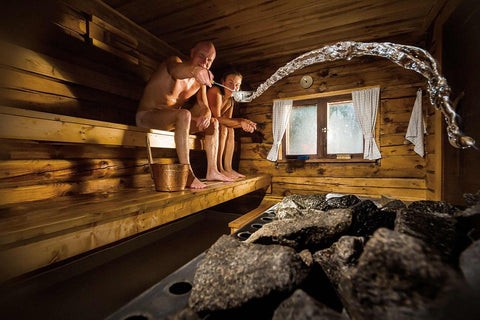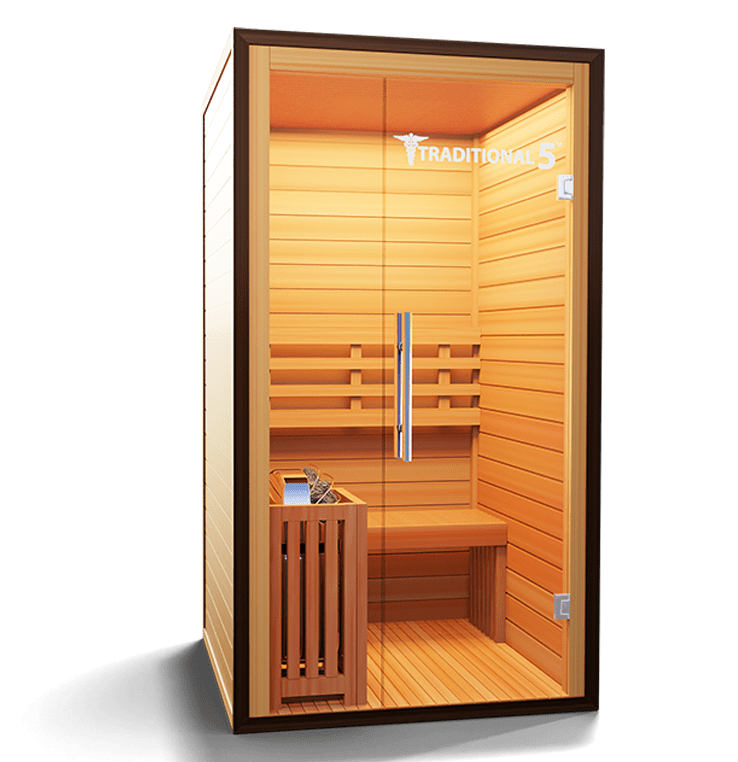Not known Factual Statements About Traditional Sauna
Not known Factual Statements About Traditional Sauna
Blog Article
Traditional Sauna Things To Know Before You Get This
Table of ContentsNot known Factual Statements About Traditional Sauna The 30-Second Trick For Traditional SaunaGetting The Traditional Sauna To WorkTraditional Sauna - Questions
Most of the weight shed in a sauna is water loss and is re-gained upon rehydrating. Without an uncertainty sauna can be an essential component of a healthy weight loss program. To consider the distinctions between standard and IR saunas, I will certainly separate these into proven, theoretical, and produced distinctions.Thus, the best point in the saunawhich goes to the ceiling directly over the sauna heateris generally in between 185 and 190 F. Traditional Sauna. Claims that a typical sauna surpasses 200 F is just not real and not suitable for electric saunas marketed in the United States. The temperature level for a far-infrared sauna is usually set in between 120 and 140 F; nevertheless, unlike the standard sauna, the goal in and IR room is not to accomplish a heat
Due to this, the temperature distinction is virtually irrelevant, since excessive sweating results in both sauna kinds, but the technique of heating up the body is various. In an IR sauna the bather will feel hot and will sweat profusely, however at much reduced temperature levels. Hence, if the goal is to invest longer time periods in the sauna, the IR sauna is a great option.

Traditional Sauna for Dummies
When the heat is achieved, the components cycle on and off to maintain the heat. A lot of conventional sauna individuals delight in pouring water over the rocks to produce heavy steam to increase sauna humidity levels. The advantages of putting water over the rocks include: making the space more comfortable, moistening the nasal flows, and allowing the use of aromatherapy by blending crucial oils with the water.
In a far-infrared sauna, the warm waves permeate the body to efficiently heat up the body and elevate the body core temperature level. To accomplish this boosted temperature level, Far-infrared emitters produce infrared energy which is close to the exact same wavelength as that which the body normally emitsoften referred to as the "Crucial Array" of 7 to 14 microns), so the power is well obtained by the body.
When the power gets in the body, it causes the body temperature to increase and ultimately leads to sweat. In an infrared sauna it is very important for the emitters/heaters to stay on nearly continuously. Considering that there is no mass of rocks to preserve warm, the sauna will certainly cool down if the emitters closed off.
As mentioned above, the sauna bather useful site in an infrared area wishes to position himself before running emitters to get optimal advantage from the warm. The heating time for the 2 areas can be extremely various, depending upon just how the spaces are made use of. For a conventional sauna, a bather ought to permit 30-40 minutes for the room to accomplish a wanted temperature level and to effectively pre-heat the rocks.
The 30-Second Trick For Traditional Sauna
A well constructed sauna will usually achieve a temperature of 150-160 F in about 30-40 mins (Traditional Sauna). For hotter temperatures, the area might need to heat for a longer period. Once the room attains established temperature, the heating unit will certainly cycle on and off, typically operating regarding 50% of the moment. The insulated wall surfaces and the heated rocks will certainly maintain the space hot and great post to read at stable temperatures.
To some, 15 mins was "squandered" while the infrared power warmed the timber panels instead than warming a body, while others find a pre-heated room to be much more comfortable and think an elevated starting temperature level is necessary to begin sweating. The size of advised usage for every area is roughly the very same (10-15 mins per session); however, because of the lower air temperature levels and the capability to feel the effects of infrared warm much faster than a typical sauna, it is not unusual for an individual to spend a total of 20-30 minutes in an infrared sauna.
Typical saunas have a tendency to be larger (therefore utilize even more electrical energy) than infrared saunas, although traditional saunas are certainly offered in one and two person dimensions. For a two-person typical sauna, 5x6 or 5x7 dimension is most popular. The top bench can pleasantly seat 2 or three people and is additionally enough time to relax during the sauna session.


The ordinary cost per kWH of electricity in the U.S. is around $0.11, so a 4.5 kW heater will cost about $.50 to compete one hour, if the heating unit runs constantly for one hour. Normally a sauna heating unit will compete 75% of the initial hour and 50% of succeeding hours on considering that the elements cycle once the set temperature level is achieved.
About Traditional Sauna
A two person far-infrared area is usually physically smaller sized than a typical sauna, typically concerning 4' x 4' or smaller sized. The IR furnace is typically 1.5-1.7 kW using a 120 volt 15 amp plug-in service. Because the space can be utilized quicker than a sauna space, we will presume the space is utilized for to of an hour including heat up time.
There is a rarely reviewed distinction in the social experience in between the two areas. While our society has shed some of the social benefit of the traditional sauna experience, it can be extremely socially rewarding. From household time in the sauna, to heart-felt discussions with better halves, to sauna partiesthe conventional Home Page sauna experience can cause intimate interacting socially.
Many higher end infrared areas include tinted light therapy, stereo and full-glass fronts. The dimension of many rooms enable 2 people to conveniently make use of the room, while some styles might enable a third or fourth person to use the room. Personalized infrared areas are likewise readily available, with area sizes offered up to 7' x 8' x 7' high.
Report this page